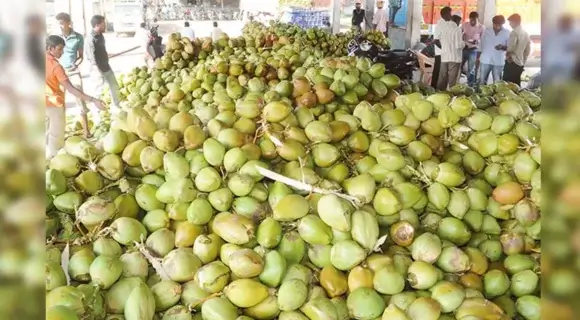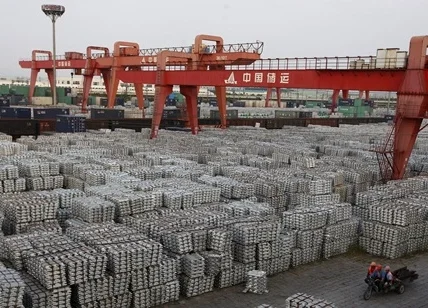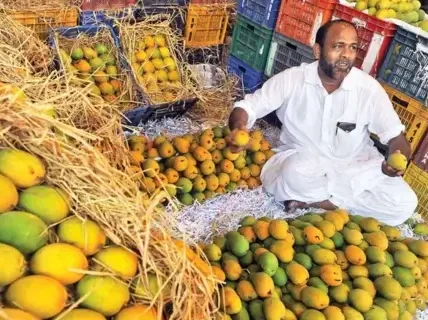Coconut, being referred to as the “tree of life,” is significant in a global aspect in having utilization in cooking, as skincare purposes, and its oil is derived for use as base for industrial products. Constantly developing the coconut industry, the world proves that this versatile crop has the place in every corner of human existence. In 2024, the global coconut production is a competition among major players. This paper discusses the top 10 largest producers of coconut, shedding some light on their contribution regarding the global trade quantity of coconut.
Countries With Highest Coconut Production
1. Indonesia – 17.13 Million MT:
World’s most coconuts are grown in tropical Indonesia. The world’s largest coconut producer is Indonesia, generating 17.13 million metric tons. The country’s perfect climate, huge coconut plantations, and strong agricultural practices led to this exceptional achievement.
Indonesia’s warm climate and abundant rainfall make coconut palms prolific growers. Coconut fields around the archipelago show the nation’s agricultural goals.
Due to its dedicated and efficient growers, Indonesia produces the most coconuts. Long-standing Indonesian coconut growers boost productivity and sustainability. Dedicated to excellence, Indonesia is the world’s top coconut producer and a key supplier of coconut-based products.
Also See: Top 10 Largest Producer Of Palm Oil In The World
2. Philippines – 14.77 Million MT:
Coconut farms in the Philippines produce 14.77 million metric tons, second globally. The Philippines’ culture and economy depend on coconuts.
Coconut cultivation is symbolized by the Philippines’ lush coconut palms. Philippines coconut output surpasses millions of metric tons, making it a worldwide participant.
Besides agriculture, Philippine coconuts are a cultural and economic mainstay. The Philippines’ agricultural identity depends on coconuts. Filipino cuisine and traditions employ coconuts to demonstrate their adaptability.
3. India – 14.68 Million MT:
India produces 14.68 million metric tons of coconut, third worldwide. Coconuts are a staple crop in several Indian regions due to their diverse agro-climatic zones.
Coconut cultivation thrives in India owing to its diversity. Coconut trees thrive in India’s coasts, plains, and hills. Different coconut varieties may be farmed, making India’s coconut yield rich.
Coconuts are essential to Indian agriculture. Trees’ various climates make them vital to the country’s agriculture. In Kerala’s coastal and Tamil Nadu’s arid regions, coconuts are farmed for their cultural and economic worth.
Coconuts are common in Indian cuisine, religion, and culture. Indian cuisine uses coconut oil, milk, and other coconut products for flavor and nutrition. In religious ceremonies, coconuts symbolize cleanliness and auspiciousness.
4. Sri Lanka – 2.46 Million MT:
Sri Lanka produces 2.46 million metric tons of Ceylon coconuts, fourth globally. Sri Lanka ranks high in coconut agriculture due to its sustainable and high-quality practices, despite having less land than other top producers.
Ceylon coconuts have made Sri Lanka a worldwide coconut producer. Ceylon coconuts are appreciated globally for their taste and characteristics, making Sri Lanka a top supplier.
Sri Lanka’s coconut farming is sustainable despite its small size. The country promotes ethical coconut farming to safeguard the environment. This attracts worldwide clients that respect ethical and sustainable agriculture.
5. Brazil – 2.33 Million MT:
Brazil, the largest South American nation, produces 2.33 million metric tons of coconuts, ranking sixth. Brazil’s tropical environment and vast coastline make coconut farming excellent for local and international markets.
Brazil’s coconut production relies on its thousands-kilometer coastline. Brazil’s varied climates encourage coconut production, from Bahia’s northern region to Rio de Janeiro’s beaches. These coastal sites provide a diversity of coconut palm environments, demonstrating Brazil’s coconut producing adaptability.
Brazil’s tropical climate supports coconut farming. Coconut palms love warm, humid, wet weather. This favorable weather maintains high-quality coconuts that meet national and international standards and enhances coconut production.
6. Vietnam – 1.68 Million MT:
Vietnam produces 1.68 million metric tons of coconuts, sixth worldwide. Vietnam’s agricultural heritage and good climate make it a coconut supply chain participant.
Vietnam’s Southeast Asian location makes it a big coconut grower. Country’s 1.68 million metric tons of coconut output show how traditional farming and a coconut-friendly climate work together.
Coconut growing in Vietnam is successful due to agricultural strategies. Due to their lengthy agricultural history, Vietnamese farmers have optimized coconut palm care and output. Vietnam sells coconuts worldwide because to its agricultural heritage.
Coconuts thrive in Vietnam’s climate. Coconut palms love sunlight, humidity, and rain. This climate-agriculture balance allows Vietnam to produce high-quality coconuts that meet local and international standards.
7. Mexico – 1.29 Million MT:
Mexico produces 1.29 million metric tons of coconuts, seventh globally. Coconuts are grown throughout tropical Mexico, especially Guerrero and Oaxaca, for local consumption and export.
Mexican coconut production relies on tropical regions like Guerrero and Oaxaca. Coconut palms love sunlight, warmth, and rain. Mexico’s dedication to meeting local and global coconut demand is shown by these large coconut fields.
Coconut farming in Mexico extends beyond local use. The nation exports coconuts to suit global demand. Mexico’s strategic location as the seventh-largest coconut grower highlights its coconut supply chain potential.
Coconuts from Mexico strengthen the local economy and broaden the global market. From coconut water to oil and derivatives, Mexico’s coconut industry helps global coconut trade. Mexico’s tropical agriculture thrives, demonstrating its ability to exploit natural resources for economic growth and sustainability.
8. Papua New Guinea – 1.19 Million MT:
PNG ranks twelfth in coconut production with 1.19 million metric tons. Unique landscapes and sustainable agriculture distinguish the country in the coconut sector.
Geographic variety makes PNG the eighth-largest coconut producer. Coconuts grow in coastal and highland locations. PNG generates a lot of coconut since it grows numerous types in diverse conditions.
Sustainable coconut farming is PNG’s specialty. Coconut cultivation helps the environment since the country supports ethical and sustainable farming. Sustainability and eco-friendly goods are popular worldwide.
Papua New Guinea’s sustainable agriculture and high-quality coconuts suit worldwide demand. Its 1.19 million metric tons of coconut production demonstrate its capacity to combine agricultural traditions with contemporary sustainability, verifying its reliability and responsibility.
9. Thailand – 0.81 Million MT:
Thailand ranks ninth in coconut output with 0.81 million metric tons, noted for its vibrant culture and tasty cuisine. Smaller than others, Thailand’s coconut industry defines its diverse and dynamic agricultural environment.
Thailand’s rich culture and wonderful cuisine boost the worldwide coconut sector. Quality above quantity is shown by the nation’s 0.81 million metric tons of coconut output. Thai coconut production is efficient, sustainable, and committed to local and worldwide demands despite its scale.
Thailand’s economy and agriculture depend on coconuts. Thailand’s food, culture, and religion include coconuts. Coconut palms are adaptable and used in Thai food and religion.
10. Malaysia – 0.54 Million MT:
Last in coconut production, Malaysia produces 0.54 million metric tons. Despite its meager output, Malaysia’s agricultural economy relies on coconuts.
Malaysia supplies the global coconut market with 0.54 million metric tons. Malaysia is a significant agricultural producer despite being smaller than the majors.
Malaysia continues coconut farming despite low yields. Malaysia’s agricultural economy relies on its coconut industry, while tiny. Coconuts boost the country’s economy and culture as more than crops.
Coconut output in Malaysia is low, yet it helps sustainable agriculture. The country values sustainable coconut cultivation. Malaysia’s quality and sustainability benefit the global coconut sector.
Coconuts are part of Malaysia’s culture and traditions, not only agriculture. Beyond economics, the coconut palm’s variety in Malaysian food, religion, and everyday life is important.
Conclusion
From culinary delights to skincare regimens, coconuts play a pivotal role globally. The top 10 largest producers of coconut in 2024, led by Indonesia, the Philippines, and India, showcase the geographical diversity and widespread cultivation of this tropical gem. As these nations continue to contribute to the global coconut market, their efforts not only shape the economic landscape but also sustain the livelihoods of millions and promote environmental stewardship.

Brandon is the cheif editor and writer at WorldUnfolds.com. With a passion for storytelling and a keen editorial eye, he crafts engaging content that captivates and enlightens readers worldwide.















